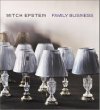by Laurel | May 1st, 2012
18 March 1933
Walence Defense and Prosecution Offer Arguments
Atty. Maher Points to Probability of Intruder and Absence of Fingerprints — Moriarty Asks Conviction
Final arguments were given in superior court yesterday afternoon in the case of Mrs. Mary Walence, who has been on trial the past five days on a charge of murder resulting from the shooting of her husband, Paul Walence, Holyoke grocer and speakeasy proprietor, at their home at 71 Linden street., Holyoke, in the early morning of July 11, 1932. The case will be placed in the hands of the jury after the court instructions are given by judge Daniel T. O’Connell at 9 this morning.
Summation of the case by Atty. Thomas C. Maher, chief counsel for the defense was made in an hour and a half of argument for the defendant, while Dist. Atty Tomas F. Moriarty followed with an hour’s rebuttal in reviewing the evidence upon which the prosecution bases its plea for conviction Following the arguments, Mrs. Walence replied in the negative when asked by Judge O’Connell is she had anything to say to the jury. Her reply was barely audible and had to be repeated to the court by Atty. Maher. The court was then adjourned until this morning.
Sees Probability of Intruder
In a stirring plea for acquittal, Atty. Maher summed up the case for the defense by asserting that the prosecution had built up its case solely on the basis of theory and circumstantial evidence and by emphasizing that there was no direct evidence to shoe that Mrs. Walence had ever had possession of the .25 caliber automatic pistol which was admittedly the weapon used when four bullets were pumped into his body while he lay in bed at his home about 2:30 the morning of July 11. Pointing to the possibility that an enemy of the slain man might have entered the house and fired the shots, Atty. Maher declared that while the defendant had ample opportunity to commit the crime, she did not have the exclusive opportunity.
Referring to the evidence that the pistol later was found by the police in the yard of the home, defense counsel said it would be logical to assume that an intruder, having entered the house and fired the shots, would have dropped the weapon as he escaped from the house in order not to have the damaging evidence in his possession the in the event of his apprehension by the police. If Mrs. Walence and her daughters had formed a conspiracy tp get rod of the revolver, they would not have thrown it into the yard in plain sight, but would have concealed it where it could not have been found.
The answer to the assertion that if there had been an intruder in the house, Mrs. Walence would have seen hm, is that the bedroom was dark and the defendant was hysterical. Her first knowledge of what had taken place came when her daughter entered the room and turned on the lights. Then, according to the testimony of the daughters, Mrs. Walence cried out, “Oh, my Paul — Look what they have done to him,” Atty. Maher said.
“Was that the cry of a woman who had just shot her husband in cold blood, or was it the grief-stricken plaint of a wife who had just looked upon the corpse of the husband she loved,” Atty. Maher continued.The attention of the jury was called to the testimony of Dr. I. R. Calkins, firearms expert, to the effect that a person inexperienced in the use of firearms would have had considerable difficulty in manipulating the revolver and that because of the recoil, a firm grip would have been required. Could this frail little woman have handled the weapon in such a way as to show the deadly marksmanship that characterized the crime, was another question raised by the defense counsel.
He also emphasized that the police found no fingerprints on the revolver and asserted that “somebody had bungled the job” by not getting fingerprints from the weapon so as to establish once and for all the innocence or guilt of the defendant. Atty. Maher declared that Capt. peter F. Cullen, Holyoke detective and one of the principal witnesses for the commonwealth had been contradicted by lay witnesses and by his own fellow officers in testimony relative to the hysterical condition of Mrs. Walence following the tragedy.
In conclusion, Atty. Maher referred to the testimony of neighbors that Mrs. Walence was a woman of good character and repute. “All the evidence shows that she was a faithful wife and a good and loving mother,” he declared. He urged the jury to bring a verdict of not guilty so that the defendant might return to her five daughters and take up the broken threads of her life.
Dist. Atty. Moriarty summarized the case for the commonwealth by asserting that the facts had been presented to build up a stronger chain of circumstantial evidence linking the defendant with the crime, All physical facts surrounding the case can be explained only on the hypothesis of guilt, he declared. Evidence that also had been given to show there was a motive in the jealousy of the wife resulting from the attentions the victim had paid to other women.
Circumstantial Evidence
“Circumstantial evidence is as good as any other kind and sometimes it is better, because facts do not lie, while there is always the possibility that in direct evidence, witnesses may not tell the truth. If there are footprints in the snow, common sense tells us that someone has been walking in the snow. When smoke issues from a chimney, we know there is fire somewhere. All of this is circumstantial evidence, which common sense dictates that we can accept as truth. We must rely on circumstantial evidence in many cases, otherwise society would be engulfed with a wave of crime.”
“I hold no brief for Paul Walence,” the district attorney continued, “but regardless of whether he was a licentious libertine or a beloved and loving husband and friend, his live was sacred under the law. We can all sympathize with the children, but at the same time we must not be swayed from doing out duty.”
Scouting the theory that an intruder might have entered the home and committed the crime, Dist. Atty. Moriarty asked, “How could this phantom murdered get into the house, with the window open only 14 inches and a sewing machine in front of it without disturbing the dolly on the machine? How could he have stood over the bed and fired five shots into the sleeping form of Paul Walence without the wife seeing either him or the flashes of the gun? Common sense tells us that it cannot be so.”
“Do you believe a kindly officer of the old school like Capt. Cullen would perjure himself in order to try to convict a woman or murder? You would have to believe that if you accept the theory of the defense that the statement that Mrs. Walence said, ‘I didn’t mean to kill him,’ was suggested by the officer questioning her. Marshal Gilday was present to substantiate the testimony as to what Mrs. Walence said.”
Motive Suggested
Reviewing the evidence lending to prove a motive for the crime, the district-attorney asserted that Mrs. Walence was suspicious of her husband, had caught him with Mary Kostek and had beaten her up. “Jealousy, rage, hatred, anger — all these motives impelled this woman to fire those shots into the body of her sleeping husband. Paul was with Mary Kostek at Gloucester only four nights before the murder, he had made up the story he was going on a fishing trip. Mrs. Walence told the officers that she had trouble with Paul for three years because of his going with other women.
In conclusion, the district attorney asserted that “Thou shalt not kill” is the law of God and the law of man. The commonwealth seeks no victim but in so far as it can on complete justice.
Mrs. Walence in answer to a direct question put to her slowly by Atty. Maher yesterday morning, said she did not shoot her husband. She cried when she said it, and also when she said that owing to the condition of the body she could not see it the day of the shooting.
Mrs. Walence was cross-examined by Dist. Atty. Moriarty relative to statements which the police testified she had made to them. She explained the alleged statement by her to Capt. Cullen that she “did not mean to kill” her husband by saying that she merely repeated what he had said to her, “Perhaps you did not mean to kill him,” and declared that she added, “I did not kill him”
The most fiery of the cross examinations thus far during the trial was by Dist. Atty. Moriarty of Dr. Irving R. Calkins, who testified that it must have been a skilled marksman who shot Walence. The “beautiful alignment.” as the witness expressed it, of the bullet holed up from the chest to the forehead showed a person of skill, strength and excellent marksmanship had fired the shots. Dr. Calkins was the last witness for the defense.
Adapted from The Springfield Republican.
Previously published articles about this case:
- Part I: Police to Charge Wife With Killing of Holyoke Man
- Part II: Probable Cause Found in Murder Trial at Holyoke
- Part III: Thousands Gather at Walence Rites
- Part IV: Indictment Given to Court By Grand Jury
- Part V: Executors Appointed, Source of Gun Held Accountable
- Part VI: Judge Assigned, Jury Selected
- Part VII: Trial Testimony Starts at Holyoke Today
- Part VIII: Marital Relations of the Walences
- Part IX: Testimony and the “Other Woman”
- Part X: Mary Walence Takes the Stand








